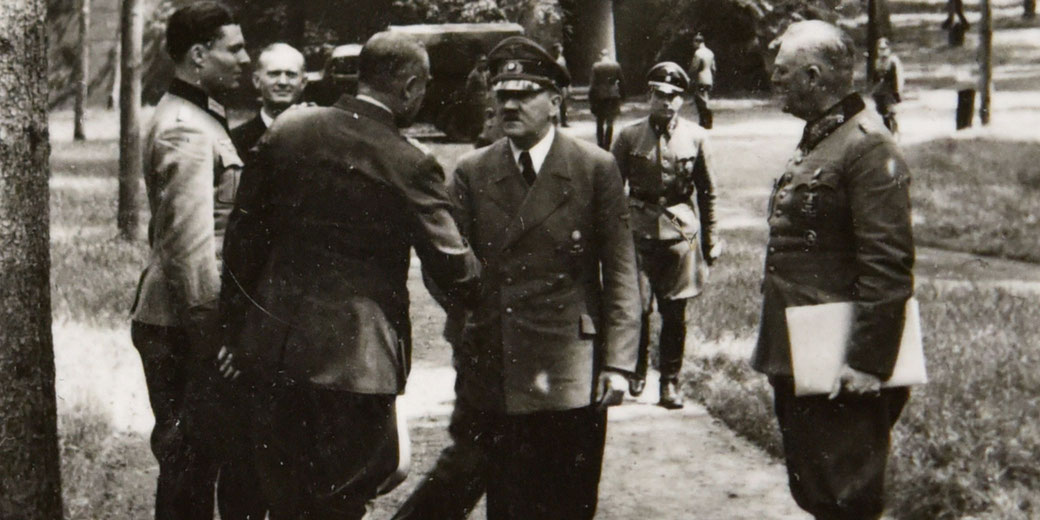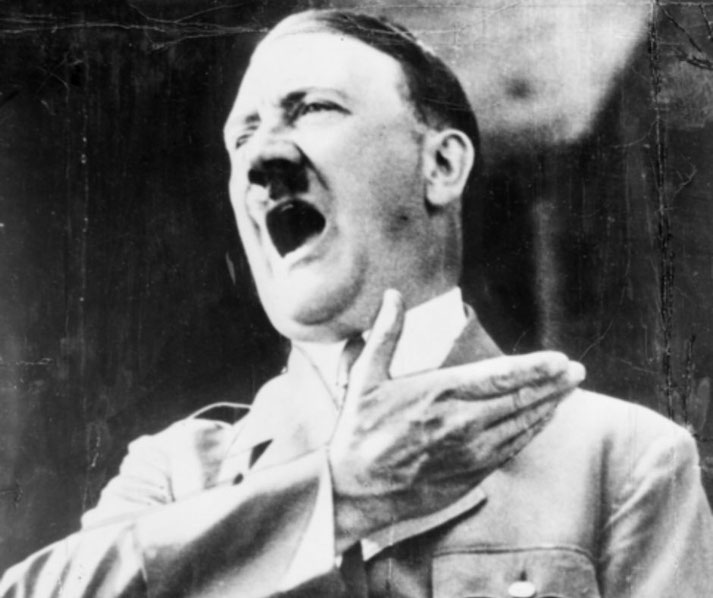July 20, 1944: The closest Hitler ever came to being assassinated

As Soviet forces pushed across Eastern Europe and Allied troops advanced from the west, the future of Nazi Germany appeared increasingly bleak.
Inside Hitler’s own military command, a group of senior officers and civilian officials apparently decided to act before the country faced total destruction.
On 20 July 1944, they placed an armed bomb beneath a table in the Wolf’s Lair briefing hut and came within seconds of almost killing the Führer.
Who were the key conspirators?
At the centre of the conspiracy stood Colonel Claus von Stauffenberg, whose aristocratic background and devout Catholic faith, reinforced by wartime service, produced a firm belief that Hitler had condemned Germany to ruin.
After suffering severe injuries in North Africa in 1943, including the loss of his right hand, two fingers on his remaining hand, and his left eye, Stauffenberg had returned home with a renewed determination to prevent further catastrophe.
By early 1944, he had joined a wider resistance group which included both military and civilian figures. General Ludwig Beck, who had resigned as Chief of the General Staff in protest against Hitler’s expansionist plans in 1938, agreed to serve as head of state after a successful coup.
General Friedrich Olbricht, who oversaw the Replacement Army’s mobilisation system, offered control of key communications and manpower resources, while Colonel General Erich Hoepner, who had been previously dismissed after he disobeyed orders during the Soviet invasion, gave the plan credibility and contacts.
Behind the scenes, General Henning von Tresckow, who had masterminded earlier failed assassination attempts, continued to recruit officers and coordinate the conspiracy.
Also involved were conservative civilian leaders who hoped to restore Germany to a pre-Nazi constitutional government.
Carl Goerdeler, who had been the mayor of Leipzig, positioned himself as chancellor-in-waiting, while Ulrich von Hassell, who was a diplomat with strong foreign connections, remained confident that the Allies might negotiate peace once Hitler had been removed.
Each man might have had different personal goals, they all agreed that Hitler’s death offered the only hope of ending the war on terms that might save Germany from unconditional surrender.
How they planned to kill Hitler
By mid-1944, the resistance had exhausted less direct assassination methods: explosives hidden in liquor bottles and fuses that malfunctioned had failed due to last-minute changes or technical errors.
At that point, the conspirators primarily placed their hopes in Stauffenberg, who had just been appointed Chief of Staff to General Friedrich Fromm.
This post effectively granted him access to Hitler’s daily briefings at the Wolfsschanze, or “Wolf’s Lair,” in East Prussia.
The plan relied on two linked parts. First, Stauffenberg would assassinate Hitler during one of the briefings, and he planned to plant a timed bomb that was concealed in a briefcase.
Second, General Olbricht would activate Operation Valkyrie, an existing Reserve Army plan designed to restore order during internal unrest.
Originally created to counter possible revolts by forced labourers or to control SS-led uprisings, the plan had been secretly rewritten to allow the Reserve Army to take over Nazi ministries and arrest key SS leaders.
To increase the plan’s chance of success, the group focused on deception and speed.
Orders would be issued quickly to Wehrmacht units across Germany and occupied Europe before news of Hitler’s survival could spread.
By using the Reserve Army, they could bypass the SS and take control of transport hubs and communication centres and of weapons depots.
If everything happened within a few hours, the coup might possibly succeed before loyalist units could respond.
On 20 July, Stauffenberg had travelled to the Wolf’s Lair, and he had carried a British-made plastic explosive.
Just before the meeting, he had excused himself and had used a pair of modified pliers to arm the device with a ten-minute fuse.
Since time was limited and his injuries had slowed the process, he had only just managed to prepare one of the two bombs.
Lieutenant Werner von Haeften, who was his aide and fellow conspirator, stood guard outside.
Stauffenberg then placed the briefcase near Hitler during the conference and then he had left the room, saying he needed to make a phone call.

What happened in the 20 July Plot?
The briefing was held at 12:30 pm and it took place in a wooden hut rather than the usual underground bunker, and its open windows and timber walls reduced the blast's force compared with the reinforced concrete rooms used at other times.
A few minutes before detonation, Colonel Heinz Brandt was unaware of the bomb’s purpose and he moved the briefcase to the opposite side of a thick table leg to get a clearer view of the map.
At 12:42 pm, the device detonated, and it killed four men and injured several others, including Colonel Brandt, who succumbed to his injuries the following day.
The list also included General Rudolf Schmundt, who he died weeks later, and stenographer Dr. Heinrich Berger, who was killed instantly.
Hitler suffered a punctured eardrum, burns, and minor wounds, but his life was spared.
As Stauffenberg was already on his way back to Berlin on a Heinkel He 111 (though some accounts say it may have been a Ju 52), he had seen the smoke plume and believed the plan had worked.
Upon landing at Rangsdorf Airfield, he informed his co-conspirators that Hitler was dead, and together they launched the second phase of the plot.
Orders spread quickly and widely from the Bendlerblock headquarters in Berlin.
Some military units responded promptly, including those in Paris, Prague, and Vienna, where SS officers were arrested and transportation hubs secured.
Yet uncertainty quickly set in as General Fromm, who was initially neutral, shifted sides once he confirmed Hitler’s survival.
At the same time, Joseph Goebbels kept control of state media and countered the plot when he broadcast Hitler’s voice to the nation.
By 6:00 pm, the truth had become undeniable, as Hitler had survived the blast and declared vengeance on the traitors, stating that Providence had spared him.
Momentum inside Berlin collapsed, and Reserve Army units returned to SS control.
Soldiers entered the Bendlerblock, arrested the key plotters, and ended the coup attempt.
Later that night, Stauffenberg, Olbricht, Haeften, and Albrecht Mertz von Quirnheim were shot in the courtyard of the Bendlerblock around midnight.
The fallout in Germany
Over the following days, Hitler launched a widespread purge of the state institutions and resistance networks.
The Gestapo arrested more than 7,000 individuals suspected of involvement. Of those, historians estimate that between 4,000 and 5,000 were executed after brutal interrogations and staged trials.
Judge Roland Freisler, who presided over the People’s Court, delivered loud and abusive sentences, and he frequently screamed at defendants and he mocked them while cameras recorded the proceedings.
Some conspirators, such as General Beck, chose suicide. Others included Goerdeler and von Hassell, who were hanged after months of imprisonment, the former on 2 February 1945 and the latter on 8 September 1944.
Executions often used piano wire and meat hooks, particularly at Plötzensee Prison, where victims were suspended from iron hooks and strangled slowly while cameras recorded the scene.
In several cases, victims were strangled slowly and filmed, as Hitler demanded to see his enemies suffer.
The regime also targeted family members, and it applied Sippenhaft, kin liability, against wives, children, and relatives of the accused.
Some children were separated from their families and placed in orphanages under false identities.
Hitler used the failed plot to tighten his control and he purged the Wehrmacht’s senior officers and granted more power to the SS.
Officers suspected of disloyalty received transfers to dangerous front-line posts.
Many were replaced by younger, ideologically loyal commanders. Inside his headquarters, Hitler became increasingly isolated and distrustful, convinced that luck had saved his life.
How the world responded
Within days, Allied governments learned of the assassination attempt. In Britain, Prime Minister Winston Churchill described the conspirators as honourable men who had tried to rescue Germany from destruction.
The BBC and major newspapers published detailed accounts of the plot and its aftermath, while many commentators believed the attempt proved that elements of the German officer corps still possessed moral conscience.
In the United States, President Franklin D. Roosevelt acknowledged the event during private meetings, but his administration continued to demand unconditional surrender.
American intelligence noted the internal instability, but planners did not expect it to shorten the war.
Public reactions were more sympathetic, especially as news emerged about the executions and reprisals.
Soviet leader Joseph Stalin, who viewed the event with suspicion, interpreted the plot as a sign of internal weakness rather than an ideological stand against Nazism.
For the Red Army, the assassination attempt had no direct strategic effect, and Stalin instructed his officials to treat it as an isolated matter.
After the war, the July 20 conspirators gradually won recognition within West Germany.
Stauffenberg, who had once been labelled a traitor, posthumously became a symbol of moral resistance.
Annual ceremonies began at the Bendlerblock site, which eventually became the German Resistance Memorial Centre, and as a result, over time those ceremonies helped Germans understand that not everyone had remained loyal to Hitler and that some had died while they attempted to stop him.
What do you need help with?
Download ready-to-use digital learning resources
Copyright © History Skills 2014-2025.
Contact via email
With the exception of links to external sites, some historical sources and extracts from specific publications, all content on this website is copyrighted by History Skills. This content may not be copied, republished or redistributed without written permission from the website creator. Please use the Contact page to obtain relevant permission.





